A presentation on our Patagonian Expedition Race experiences will be held at the Milton Running Free Saturday April 10th at 4:30pm. If interested in attending please RSVP to milton@runningfree.com.

Name of Race: Patagonian Expedition Race
Website: http://www.patagonianexpeditionrace.com/
Date of Race: February 9-17, 2010
Location of Race: Southern Patagonia, Chile
Type of Event: Adventure Racing
Distance/Length of Event: 7-9 Days
For the past few years our team has talked about doing one of the most isolated, pristine and truly epic adventure races out there – the Wenger Patagonian Expedition Race. We had seen the pictures and spoke with past racers who confirmed this is one amazing experience. Unfortunately our regular teammate – John Ranson – could not make the commitment with Denise Rispolie, James Galipeau and I (Harper Forbes). It was November and the race was in only 3 months so we needed to contact some others we knew who might be up for the task. The first person we asked was Andrew Cameron, from Team Salomon-Suunto. We’d raced with him twice in the summer of 2009, both to some enjoyable overall wins, so we knew he’d be a great fit, plus a very strong athlete and navigator. Amazingly he responded he was up for the challenge and our team was set.
Next, we contacted some companies who we thought might be interested in helping us with some of the extensive gear required. The amount of support companies we received was outstanding – companies like Princeton Tec, Hilleberg the Tentmaker, Fox River Socks, Aquatabs, Icebreaker, Meal Kit Supply Canada, Smith Optics, Mountain Hardware along with our usual sponsors Running Free and Salomon, Phat Moose and Rohloff – all provided us with some essential equipment needed for a successful race. We would be named after our title sponsor (and a favorite race of ours!) Team Untamed New England (which drew some curious questions given our home country of Canada!).
We took the 20+ hour flight out as late as possible, missing the official registration and crammed in registration, grocery shopping, packing and testing for the next few days in Punta Arenas prior to race start. The international atmosphere and an exciting course preview had us restless in the nights prior to the race. The course would feature an 8K paddle across the Strait of Magellan, followed by a mix of 300+K of trekking and biking across the relatively flat portions of Northern Tierra Del Fuego. Once at the south end of the island, it featured a 100+K trek across the Darwin Cordillera, featuring many mountain passes and basically up-and-down (repeat 5-7 times) for the entire trek. Finally arriving near the Beagle Channel, we would kayak 50K across to Navarino Island where a 40K trek and similarly distanced mountain bike took us to the finish in Puerto Williams, the southernmost city on earth. Total distance was right around 600K.

The maps were a mix of rough satellite images on a 1:200,000 scale with the occasional 1:50,000 “contours only” detail, all featuring contour intervals of 100m! Such large scale maps would make navigating difficult as we had heard from previous years. Apparently these maps were even better than in years past too! Checkpoints were pre-plotted with recommended routes, which usually made good route-sense. The course designer Stjepan had spent the last 18 months scouting all areas of the route so the suggestions were not taken lightly, although we did veer off them occasionally, usually on purpose 😉 The other important note about the race was that gear bags were to be separated by specific checkpoints, so no one was going to have their own gear bag at every checkpoint transported every time; instead, we had to pack our bags according to the section following the checkpoint. Smart packing was essential with respect to clothing and food for race success.
The race start consisted of a bus ride to the Strait of Magellan where high winds/swells forced Stjepan to cancel the paddle at the advice of the Chilean coast guard. We took a ferry ride across to Tierra Del Fuego and within minutes the race was on. Since the paddle was cancelled the ‘trek’ was increased another 5K or so, making it a half-marathon distance along the beachline. Teams were told not to stray off the beach since there were land mines still in the upper shoreline – remnants from the former war between Argentina and Chile for the possession of Tierra del Fuego. We weren’t sure how fast the start would be considering we had about 8 days of racing to do, but we found out quickly that the top teams would be running this at a very strong pace. With our ~25lb packs we followed suit and were finally racing! The sand was slow going and I’m pretty sure we all redlined for the first few hours along the beach. Not the start we expected but we made it into the first CP/TA in 5th. We assembled our bikes as soon as we could but our slow transition (a recurring theme in this race for us) got us out in 7th, where we made our way along the gravel roads of Tierra del Fuego.
 The wind! Wow… is all I can say. We were blown all over the place with a constant wicked 60-80km/h head/crosswind coming in from the Strait of Magellan. We formed a diagonal pace line (echelon) and tried to stay on our bikes as much as possible. The first 30K along the coast took us nearly 3 hours! It was mentally very tough to be pushing so hard pacelining at just 10km/h and having to pedal downhill at 12km/h! We did get through it, albeit with several comical crashes, and managed to pass the 2 other teams that beat us out of the TA in the process. Once out of the head/crosswind we had the wind at our backs for the complete opposite experience. No need to pedal as we were pushed 35km/h with NO EFFORT. Some uphills didn’t even require pedalling… it was nuts. We eventually made it further inland where wind wasn’t as much of an issue and into the next CP/TA.
The wind! Wow… is all I can say. We were blown all over the place with a constant wicked 60-80km/h head/crosswind coming in from the Strait of Magellan. We formed a diagonal pace line (echelon) and tried to stay on our bikes as much as possible. The first 30K along the coast took us nearly 3 hours! It was mentally very tough to be pushing so hard pacelining at just 10km/h and having to pedal downhill at 12km/h! We did get through it, albeit with several comical crashes, and managed to pass the 2 other teams that beat us out of the TA in the process. Once out of the head/crosswind we had the wind at our backs for the complete opposite experience. No need to pedal as we were pushed 35km/h with NO EFFORT. Some uphills didn’t even require pedalling… it was nuts. We eventually made it further inland where wind wasn’t as much of an issue and into the next CP/TA.
At the TA we disassembled our bikes and changed into our trekking gear. I think we were somewhere around 5th. Unfortunately our transition bag had not arrived, where I had placed our detailed (1:100,000) trekking maps, food and clothing for the next section. All the teams were in the same boat for this section though; the ferry we caught across the Straight of Magellan earlier that morning was closed shortly after our sail due to high winds and heavy seas, stranding our gear bags on the mainland. That explains our difficulty biking! It wasn’t too much of a hindrance though, as the race provided some food and our cycling clothing was still dry.
For the next trek we decided to veer off the recommended route and take the road to the next CP, followed for a while by adventure racer-turned-documenter Mike Kloser, who was down to film footage and ask AR-related questions while racing. It was a boring trek, where we decided to run for 1 min and speedwalk the next minute, repeating this as long as we could for the ~40km to the CP. It took us through the night and into morning when we arrived at CP5 shortly after the Swiss and Helly Hansen who were vying for 1st place. Our gamble had paid off taking the roads and we used the same thinking (roads) to CP6. The roads would add a good 5K or so to the 18K trek but since the maps were so poorly detailed and we now were in some hilly areas, it seemed like a logical choice. Once again, it paid off and we came into transition 1st, 4 minutes before Helly Hansen and 10mins before the 3rd place Spanish team.
We had a really slow transition here, taking just over an hour to build our bikes and eat, whereas Helly Hansen was out in less than 20 minutes! We had been pushing at near full-steam for the last 30 hours so I think that also slowed our eagerness to get on the bikes. The Spanish beat us out of the TA as well, although one of them was begging around for spare chainring bolts. James lent him his spare bolt to help fix it but I think they guy just ended up removing his middle chainring completely.

Once on our bikes we were subject to the harsh Patagonian winds and decided to walk our bikes over several extremely windy parts to ensure we stayed on the road and away from the roadside cliff. For a while again we were joined by Mike Kloser who had no trouble keeping up with us on our loaded bikes. After about an hour of some technical doubletrack James’ seatpost bolt exploded and we had to do some repairs. After a few iterations of creative zip-tying and duct-taping and an eventual supplement of a rack strap, it seemed to support James very well for the remaining ~150km. We had lost some time here, but it could have been much worse. We continued to plug along in a paceline for a long stretch heading further south across Chilean Tierra del Fuego. Eventually we passed the Spanish team and darkness soon fell. We debated stopping to sleep at CP7 but decided to push through the next ~50km to CP8 – the transition to trekking. Andrew was battling the sleepmonsters but was quickly back in action after a little help from a caffeine pill. The remaining 50km on the bike was tough… mostly all uphill, with a huge ascent at the end which seemed to last forever. Denise, James and I were especially struggling with the climb and sleepiness at this point, the only cure seemed to be endless annoying banter and terrible singing, but we eventually made it over the pass and descended while the rain fell. It was a cold ride down the mountain and we were a little chilled when we eventually made it into the TA at CP8. Once there we took our first sleep of the race, deciding on 4 hours to get us fully recharged for the huge trekking portion of the race, which we estimated to be three days, but it was really anyone’s guess.
After 4 hours of sleep we awoke to the Swiss, Spanish and German teams also in the TA about to depart. Helly Hansen had left in the middle of the night after getting a few hours rest. We took down camp, packed our bikes away and stowed 3 days of food each in our now monstrous packs. Though our packs were very heavy, we knew this weight investment would pay off later in the trek.
We ascended sharply into the Darwin Cordillera and the scenery was spectacular. We made it up and over the first major mountain pass, giving up spots to the Swiss, Spanish and Germans, who appeared to be quicker mountain trekkers.
Eventually we made it to CP9 at Profundo Valley, where the rappel was located and the Germans were just about to start. Waiting for them to rappel on the single line cost us a good hour of precious daylight, and we eventually made it down into the canyon after the rappel just before dusk.
We scrambled along boulders and llama trails between the canyon’s massive walls for about 5km down to the end of the canyon, where it opened up to a perpendicular valley between two alpine ridges. We were to take the Los Vientos pass (pass of the winds) located in a notch, high on the mountain. We had a lot of difficulty in this stretch due to the darkness – firstly because we prematurely thought we had reached the valley floor when we turned out to be still in the hanging valley at the exit of the canyon. This led to an unexpected and sketchy final decent into the valley. Additionally we could not seem to locate the recommended route up the following mountain.

After several hours attempting to locate where we were using triangulation off of night-cloaked features, we decided to bed down for a few hours until sunlight. We awoke halfway up the mountain, still unsure of our exact location, but decided we would try and go up a bit and maybe find the route from where we were. We were shortly cliffed-out into a slot canyon within the mountain and decided to turn around and descend back to the valley floor where we’d maybe try going around the mountain along the ocean’s coast using the low tide instead of the recommended up and over. We trekked for an hour or so out to the shoreline until finally realizing the beach along the coast only ran 1km or so before steep sea cliffs plunged deeply into the water making our creative idea impassible. We went back to the mountain area and located the approximate start of the re-entrant of the recommended valley route and finally made our way up and over after wasting much time looking for alternate routes.

After finally gaining the ridge and stepping over the breath-taking pass, we descended into the next valley to the south where we followed a river which would lead us to CP10, a Tyrolean traverse over the river. I took a mental break here navigating and we started looking around the wrong area for the CP, but got back on track to the correct area, and in the process realized it was not in the intended spot. We ran into several of the photographers who indicated they had been dropped off at the headwater of the river and couldn’t find it from their way either… We backtracked along the river to where we’d seen an old bridge with a rusty cable spanning the raging river, but it was not the CP. Back and forth we went searching the area until we finally ran into a volunteer who indicated the CP had been moved for safety reasons to 3K past the intended area. We’d wasted a good 3 hours of sunlight looking for this thing but we tried to remain positive, knowing that us and the four teams ahead of us had the same problem. The traverse was brutal – basically you were dragged through ice-cold water. I am not sure why it wasn’t placed higher – we may as well have swam it (which Helly Hansen did since it was so far off the documented location).
Once off the traverse, we changed quickly and were about to take our ‘secret’ route which was using a road unmarked on the topo maps that we had found in the road map given to us in our race package. It would make the trek a bit longer distance but wouldn’t require us to traverse the Escondido Pass at night. As we were about to depart to the road I asked one of the volunteers how decent the road was. Maybe I shouldn’t have asked because they indicated the road was not useable other than for military travel and that we could be detained for using it – D’OH! With that in mind we decided to abandon that idea and use the recommended route.We made it into the valley below the pass before nightfall but were unable to see much once it counted at the higher elevations. We continued up and up until we finally thought we had reached the pass. We descended and started heading down into the next valley but I quickly noticed all the elevation and streams were not going in the correct direction. Did we ascend over the wrong pass at night and into the wrong valley? We studied the maps to try and figure out where we were but at night we couldn’t see anything helpful. We decided again to take rest and figure it out in the morning under light. I think we got maybe 4 hours again, although only 2 was intended but we slept through the alarm! We heard the Finnish team outside and we quickly broke down camp and looked around the fog to figure out where we were. Luckily a recognizable rainbow feature on a mountain range to the north allowed us to triangulate our position, which we realized was still shy of the Escondido Pass. The 100m contours had led us over a false summit and we still needed to go further south to hit the intended pass. We made it up and over and finally onto the next CP, trading spots with the Finnish team over the infamous Patagonian Turba (peat bog) onto CP11. Since it appeared most of the high-elevation mountain trekking was over we really wanted to push until the paddle from this CP, however, we were told it was another 2 days trekking from here at a good pace. We needed to take stock of our food since we were on Day 3 of the trek and still had another potential 2 days. James was almost out of food after developing a voracious appetite during the first day of the trek, but Andrew, Denise and I had enough to share we figured. It would be tight, but I think we were in better shape compared to most teams already who’d passed through. Many were already out of food completely with 60K left still! On we pushed to CP12 situatied at a glacial morraine lake. I really wanted to get as much done as we could before dark but once again night descended a few hours before we could make the pass and we found ourselves unsure once more of exactly where we were on the mountain. The situation was compounded by a freak blizzard and a route which indicated there was only one correct valley to take once we arrived at the pass; any other valley would be disastrous.
We kept our bearings and hit the proper elevations all according to the maps but the 100m contours would once again wreak havoc on us with us ascending and descending, running into cliff faces to the point where we didn’t want to risk the incorrect descent and decided to bed down. As day broke I looked outside the tent only to see more blizzard and white-out conditions. Ugh!! We sat in the tent and drifted in and out of sleep until we heard voices. The Fins once again were passing us while we slept! We took down the tent and could now see better than earlier. Over the Las Lagunas Pass and into the correct valley we went. Also catching up to us was the US team, GearJunkie.com. We had now dropped to 7th but assumed we would be given a time-bonus for the delay in finding the moved traverse CP, and we knew the other teams were out of food for a while so we maintained a positive attitude. The descent down the valley and into CP13 and CP14 were fairly uneventful, mostly downhill and easy to obtain. We normally would have ran this part as some of it was on llama trails (for the first time in the race!) but unfortunately Denise’s leg/ankle was killing her, with a possible stress fracture, so we fast-hiked it as much as her leg would allow. From CP14 it was a coastal trek onto the paddle TA at CP15 where stop-time was also in effect (you could only leave from the paddle at 6:30am – no other time was allowed). We got into the camp, set up our tent and readied for the paddle the next day, setting our alarm for 4:30am. The winds whipped outside the tent and we all feared for a dangerous paddle the next day. All of the sudden James yells out – “guys it’s 5:35am, we slept through our alarm again!”. We had 20 minutes to pack up, take down the tent and gear-up for a >50km ocean paddle and a 30km trek! I ran out of the tent to make sure they hadn’t left yet and hoped to stall for time, when we luckily found out the paddle was going to be re-assessed at 7:00am because the swells were currently too dangerous for us to paddle. Whew! We got a huge break here or I’m not sure we would have made it. Around 9am we finally embarked on our first paddle of the race, across the legendary Beagle Channel. The race organizers decided to make it mandatory for all teams to stay together for the first 8km across the channel for safety reasons. The swells were reported at 1.5m but the boats were so stable, we felt more than safe paddling. As usual, the scenery surrounding us was stunning. Once all the teams were collected near the south shore of the Beagle Channel, the race re-started. It was the Swiss, Spanish, Germans, USA (GearJunkie.com), us and half of the Finnish team (they had to pull out due to an injury to a teammate). During the paddle we had the Chilean Coast Guard and Navy surrounding our kayaks!

The trek was to include an ascent to Mount King Scott but due to blizzards the previous day and the advice of Helly Hansen (who had completed the paddle/trek the day before and now finished in 1st place) the race organizers decided to skip this portion of the trek due to safety reasons. We were also informed that the final short bike was cancelled due to logistics in moving our bikes, so instead of having just under 24 hours to the finish line, we suddenly had less than 12! We hurriedly packed up and bushwhacked up to higher elevations which was extremely tough for Denise and her injury which was in full blown pain mode. Eventually we made up along the mountain plateau and criss-crossed the existing trail set by the earlier racers. At lower levels we bushwhacked until coming across the recommended trail to the finish. A painfully slow and sketchy boulder-strewn beach traverse took us to the finish. Under 7 days after starting the race we were finished! We were elated as this was the toughest race we had all ever done. We gave a short interview to the cameras and headed off to camp to congratulate all the other racers and get off our feet.
The next day we were transported to Puerto Williams and had a captains meeting to determine the ranking. Unfortunately, it was decided that no time bonuses were to be given for the incorrectly placed traverse (even though all teams after us were directed there exactly from the intended location) and we ended up in 6th overall, beat by the GearJunkies.com by a mere 45 minutes and out of the podium by only 3 hours, which is pretty negligible over 8 days. They also didn’t penalize teams who had been given food by the race volunteers, which was a serious offence, but probably too hard to pinpoint who got what/where. We looked back and thought of all the times we wasted sleeping in, having slow transitions and trying to negotiate the alpine passes at night (the only time we seemed to arrive there) and it stings a little, but overall given the adversity of our bike mechanical and Denise’s injury we did pretty well and know we could have easily been much further up the standings. After a 35-hour ferry ride back to Punta Arenas courtesy of the Chilean Navy we wrapped up the event by an awards ceremony party before heading back to Canada the next morning.
 Overall it was an incredible experience and one we will never forget. The scenery was the most beautiful we’ve ever witnessed and the absolute remoteness was incredible. We want to thank all of our family and friends for their encouragement before, during and after the race. You were in our thoughts at all of those tough times during the race. Also, we’d like to thank of all our sponsors for their support – we were truly amazed at how far beyond our expectations the equipment/food they provided us performed during the race in the most brutal conditions. We feel so lucky to have had your products with us for the Patagonian Expedition Race!
Overall it was an incredible experience and one we will never forget. The scenery was the most beautiful we’ve ever witnessed and the absolute remoteness was incredible. We want to thank all of our family and friends for their encouragement before, during and after the race. You were in our thoughts at all of those tough times during the race. Also, we’d like to thank of all our sponsors for their support – we were truly amazed at how far beyond our expectations the equipment/food they provided us performed during the race in the most brutal conditions. We feel so lucky to have had your products with us for the Patagonian Expedition Race!
A presentation on our Patagonian Expedition Race experiences will be held at the Milton Running Free Saturday April 10th at 4:30pm. If interested in attending please RSVP to milton@runningfree.com.

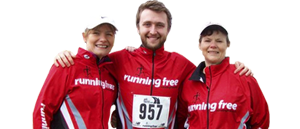




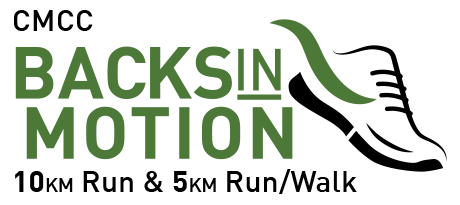



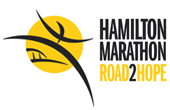

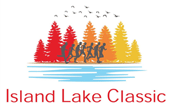

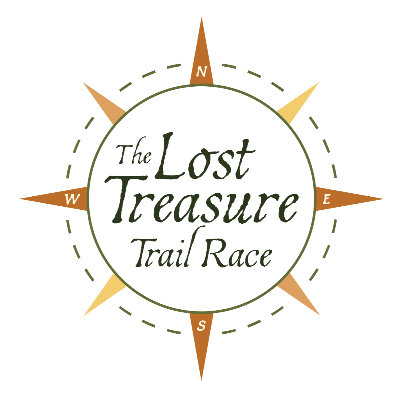


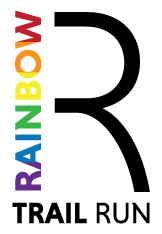



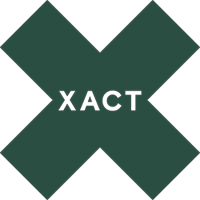
Seatpost again!!! haha
You all have put yourselves at another level…You all rock!
Take a well deserved bow. The whole team deserves that. Harper, I thoroughly enjoyed reading your race report. So glad that you have all arrived safely back to Canada!
Incredible endeavour and amazing accomplishment. CONGRATS to each of you!!
Truly amazing considering the insanity of it all! Loved following along and cheering in cyberspace waiting patiently for updates with everyone – you all did Canada proud down there and we are so proud of you all! Welcome home!! Congrats!!
Thanks everyone for all the congrats! We’ll be holding a presentation next month, details are provided at the end of the race report. Hopefully we will see some of you there!
Wow, what an INCREDIBLE experience …. by the end of reading the overview I had tears of being overwhelmed for all of you. You all deserve a long and restful sleep after such a fantastic adventure that I’m sure you’ll never forget. Many congratulations to all of you for enduring and finishing this lifetime adventure!!
Hey Guys…Great job! We did the race last year…loved it – tough race – the last of the true remote adventure races left on the planet…reading your race summary reminded me of all the years and races we’ve done…well done! Enjoy telling others of your journer.
Jim mandelli
Team Subaru Canada
(Raced Patagonia last year as Spirit Canada)